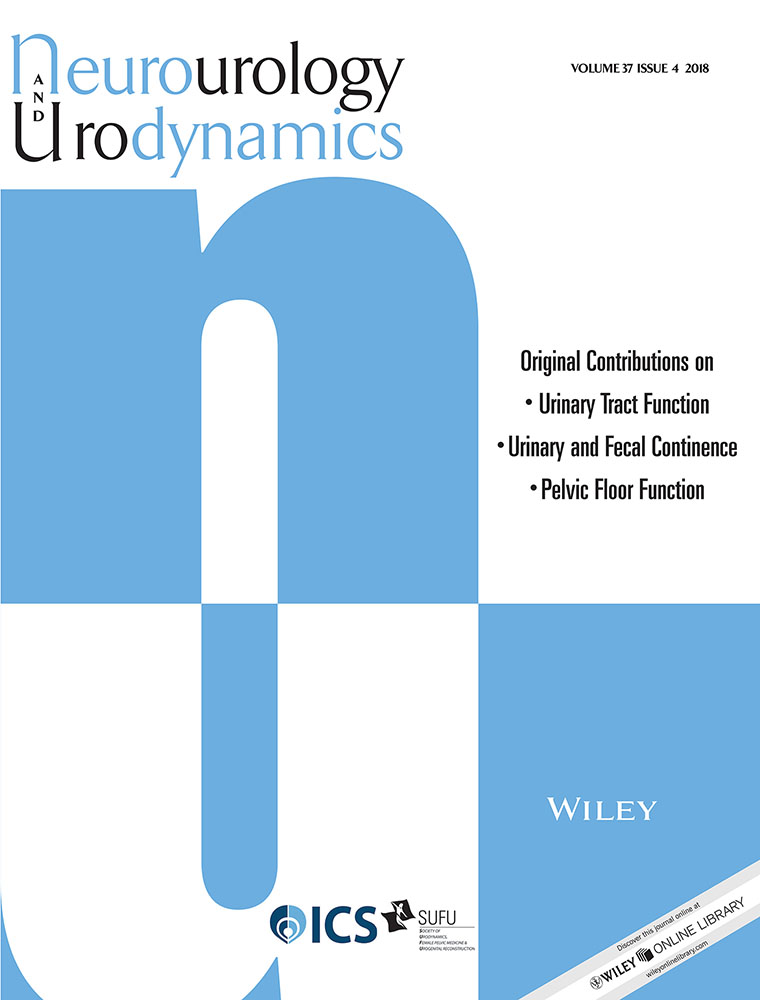Role of microglia in the spinal cord in colon-to-bladder neural crosstalk in a rat model of colitis
Abstract
Aims
We investigated whether spinal cord microglia are involved in colon-to-bladder neural crosstalk in a rat model of colitis.
Methods
Adult female SD rats were divided into A) control, B) colitis, and C) colitis + minocycline groups. Experimental colitis was induced by administering 50% trinitrobenzene sulfonic acid into the distal colon in the colitis group and the minocycline group. Minocycline, a microglial inhibitor, was continuously infused into the intrathecal space in the minocycline group. The following investigations were performed on day 7: (1) continuous cystometry (CMG) in an awake condition; (2) nociceptive behavior observation induced by intravesical instillation of resiniferatoxin; (3) toluidine blue staining in the bladder; (4) Immunofluorescence staining for the microglial marker, CD11b, in L6 spinal cord sections; and (5) quantitative RT-PCR to investigate interleukin-1β (IL-1β), chemokine ligand 3 (CCL3), and brain-derived neurotrophic factor (BDNF) gene expression in the L6 spinal cord.
Results
In comparison with the control group, the colitis group showed significant increases in (1) micturition frequency during cystometry; (2) resiniferatoxin-induced freezing behavior (bladder pain); (3) the number of total and degranulated mast cells in the bladder; (4) the number of microglia in the L6 spinal cord, and (5) the expression of IL-1β, CCL3, and BDNF mRNA in the L6 spinal cord. Moreover, intrathecal administration of minocycline alleviated these pathophysiological findings caused by experimental colitis.
Conclusions
Spinal microglia may play an important role in colitis-induced bladder overactivity and enhanced bladder pain sensitivity in colitis rats.




